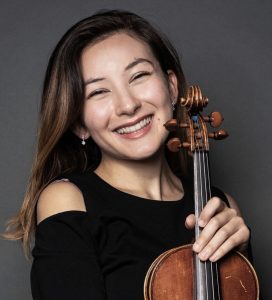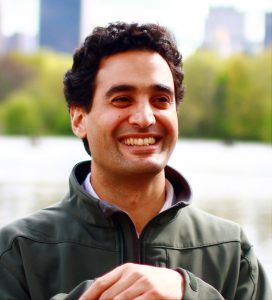Video on demand from our January 21 concert at Jordan Hall
FAURÉ Piano Trio in D minor, Op. 120 (1923)
George TSONTAKIS Portraits by El Greco (Book 1): Quintet for Clarinet, Violin, Viola, Cello and Piano (2014 BCMS commission)
Grażyna BACEWICZ Oboe Sonata (1937)
BRIDGE Piano Quintet in D minor, H. 49 (1904-05; rev. 1912)
Featured musicians
Max Levinson
Isabelle Durrenberger
Alyssa Wang
Marcus Thompson
Raman Ramakrishnan
Peggy Pearson
Romie de Guise-Langlois
Composed a year before Faure’s death, the Piano Trio in D minor demonstrates the composer’s rootedness in tradition while also utilizing an expansive harmonic language that marks the trio as a twentieth century work. The composer’s gift for melody is displayed throughout, from the opening cantando (“singning”) cello solo to the tender and nostalgic second movement Andantino, the trio’s longest movement and emotional centerpiece.
George Tsontakis’s Portraits by El Greco (Book 1), BCMS’s 2014 commission, commemorates the 400th anniversary of the eponymous Greek painter’s death. Scored for piano quartet plus clarinet, five of the work’s six movements correspond to paintings that depict episodes in the life of Christ, while the first movement, “Toledo,” hauntingly depicts the landscape of El Greco’s adopted Spanish city.
The Oboe Sonata by Grażyna Bacewicz is active and light throughout, avoiding extremes while displaying the oboist’s technical and lyrical facility. The opening Allegro is built largely on a three-note, trill-like motive and contrasts short, rhythmic passages with longer, singing lines. The second movement waltz and third movement Scherzo, respectively lyrical and lively, round out this compact work.
Yearning and passion spill forth from Frank Bridge’s Piano Quintet, a tour de force for both piano and strings. The opening Allegro sets the tone for this three-movement work with its lush texture and symphonic swells of sound. The following Adagio with contrasting Allegro challenges the strings with extensive unison playing against virtuosic passages in the piano, while the finale brings a return of themes heard in the first two movements, creating a cyclical structure.








